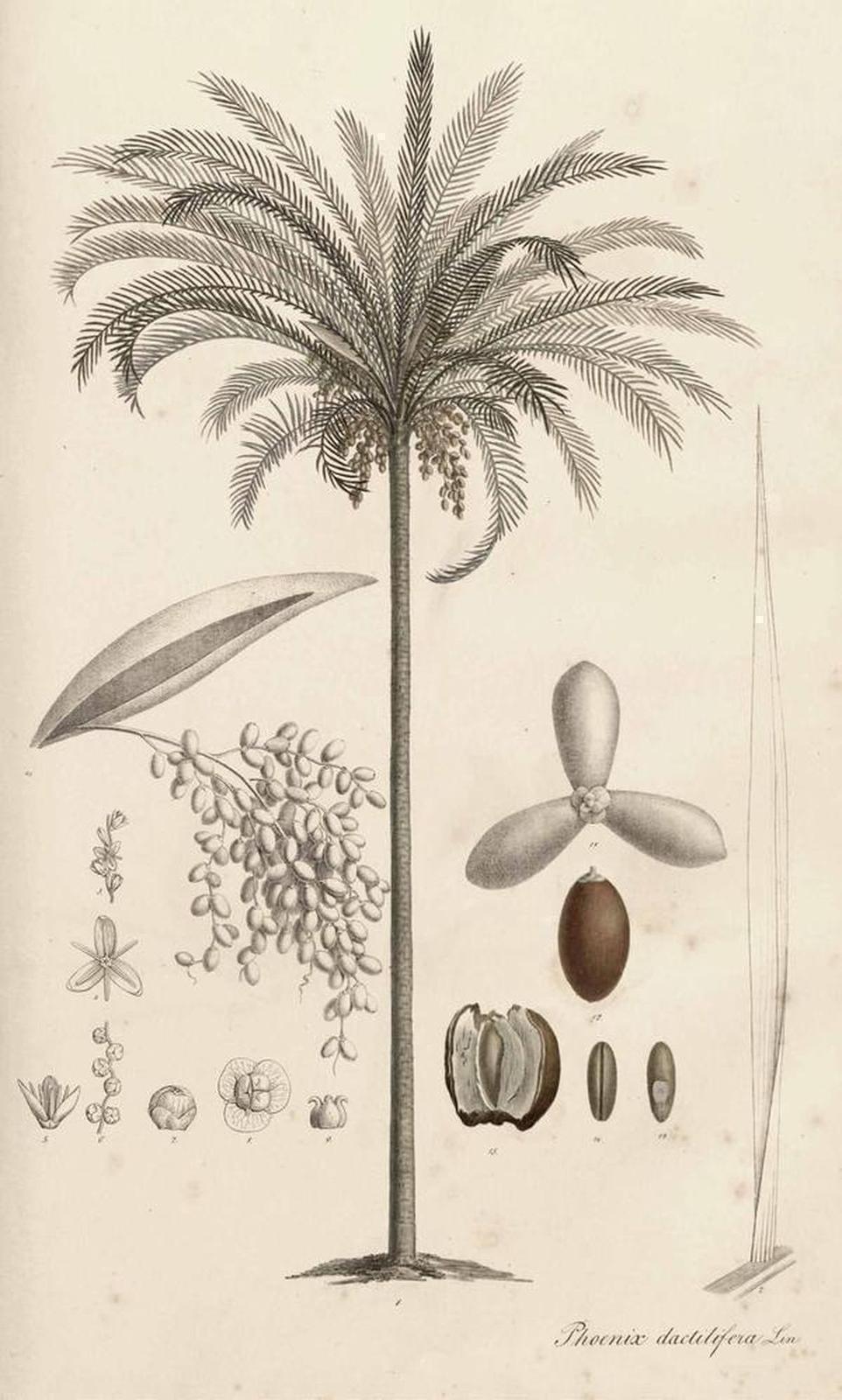Phoenix dactylifera L.
ArecaceaeUnos dicen que el nombre genérico Phoenix se debe a que las palmeras datileras conocidas por los clásicos procedían de Siria, país de los fenicios; otros que en griego significa rojo oscuro, lo que aludiría al color de sus frutos maduros; en cualquier caso ese era el nombre latino de la palmera. La palmera, procedente de África y Oriente Medio, gracias a la armónica disposición de sus hojas, semejantes a rayos, ha sido asociada desde tiempos antiguos al mito del Sol, evocando imágenes de gloria y de inmortalidad para civilizaciones antiguas como la egipcia o la romana. Imagen a su vez del oasis, es una planta que ha constituido un elemento fundamental en la cultura y economía musulmanas: el dátil proporciona alimento, de las hojas se obtienen fibras para la construcción y trabajos de cordelería, y la savia proporciona un líquido azucarado, la miel de palma, muy estimada por los habitantes del desierto. En las descripciones coránicas del Paraíso aparece, de hecho, la palmera formando parte de él. Abd al-Rahman, emir independiente de al-Andalus, como si esta tierra fuera un nuevo paraíso, plantó en Córdoba la primera palmera en Occidente para no olvidar su patria de origen, Siria, donde esta planta crecía con naturalidad: los árabes en España cultivaron desde entonces ampliamente la palmera, de lo cual son testimonio grandes palmerales como el de Elche. El análisis polínico del patio de la Casa de Contratación de Sevilla, cuyos resultados recoge Rafael Manzano, señala más de algún indicio de restos de polen de palmera datilera, por lo que puede que ya fuera frecuente el cultivo ornamental de esta planta en época islámica, desmintiendo así la teoría que sugiere su presencia en el Alcázar como resultado de la moda romántica orientalista de la segunda mitad del siglo XIX, iniciada por los duques de Montpensier.
Procedencia
Europeo/MediterráneoCalendario
Hábitat
Morfología
 Palmera
Palmera
 Parasol
Parasol
 Pinnada
Pinnada
 Lineal
Lineal
 Otras disposiciones
Otras disposiciones
 Entero
Entero
 Cuneada
Cuneada
 Agudo
Agudo
 Perenne
Perenne
